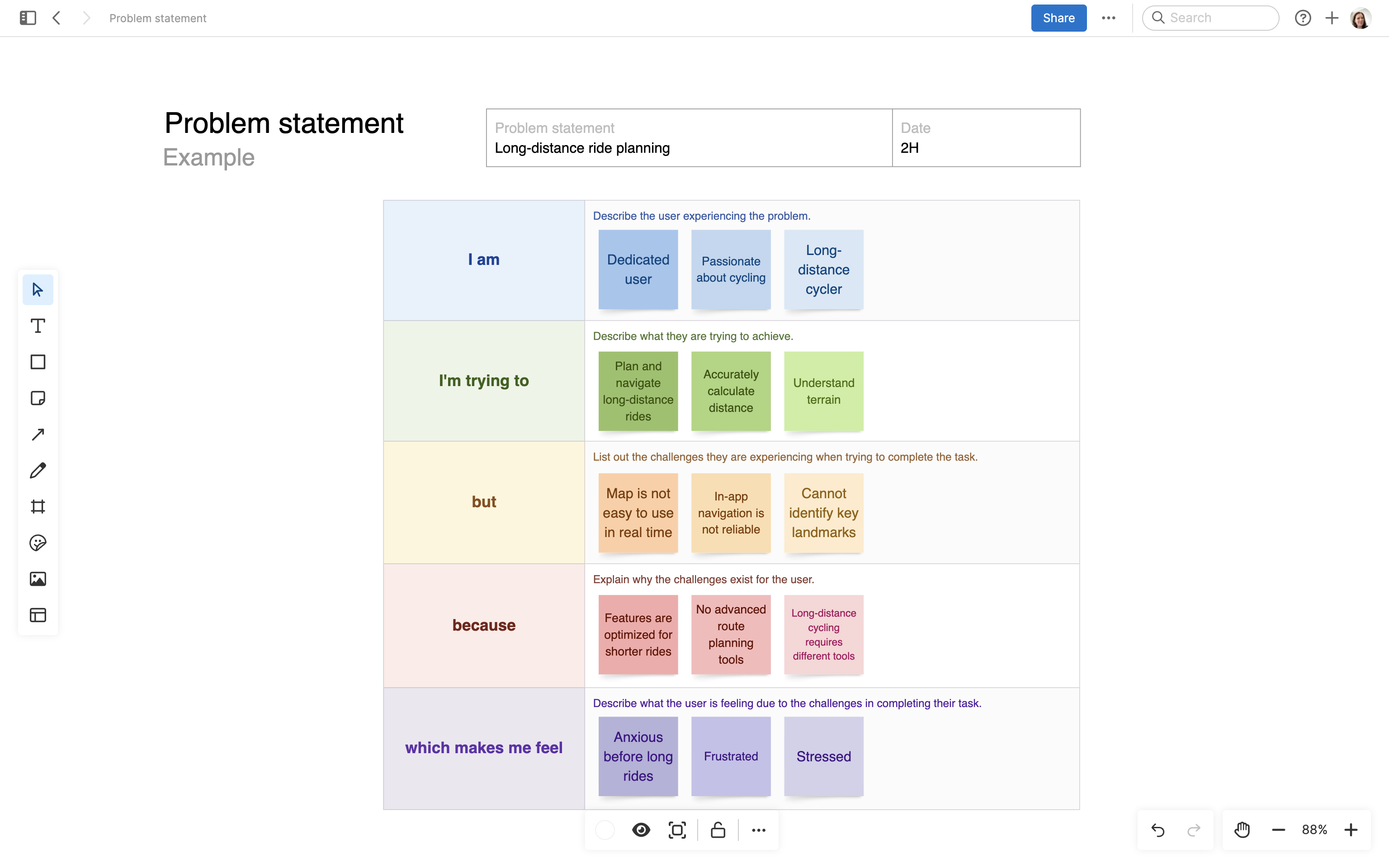
About the problem statement template
To continuously deliver value, you need to understand what your customers need. This requires deeply empathizing with their challenges and peeling back the layers of what they are experiencing.
This problem statement template provides a simple framework for doing so. Written from a user's point of view, you collect information on who the user is, what they are trying to do, the challenges they are experiencing, the source of the challenges, and how they feel. The template emphasizes being customer-centric and solutions-agnostic.
Where possible, add supporting data or KPIs that can be used to measure the impact of the problem. Only once you understand the problem deeply can you aim to solve it.
Best practices
Improve focus and efficiency as you find the right solutions to a problem.
Capture the basics Define the customer who is experiencing the problem, the core challenge they are facing, and their primary goal. Use existing documentation, such as customer personas, to add insights into their needs and behaviors.
Assign metrics How will you know what success look like? Describe the desired outcome and impact to KPIs associated with solving the problem.
Refine with team input Collaborate with teammates to review and expand on details. Aim to add more depth and accuracy to your problem statement.
Revisit and revise A problem statement is not set in stone. It should evolve as your product does. Regularly review and, if necessary, revise the problem statement to ensure it aligns with changing customer needs.